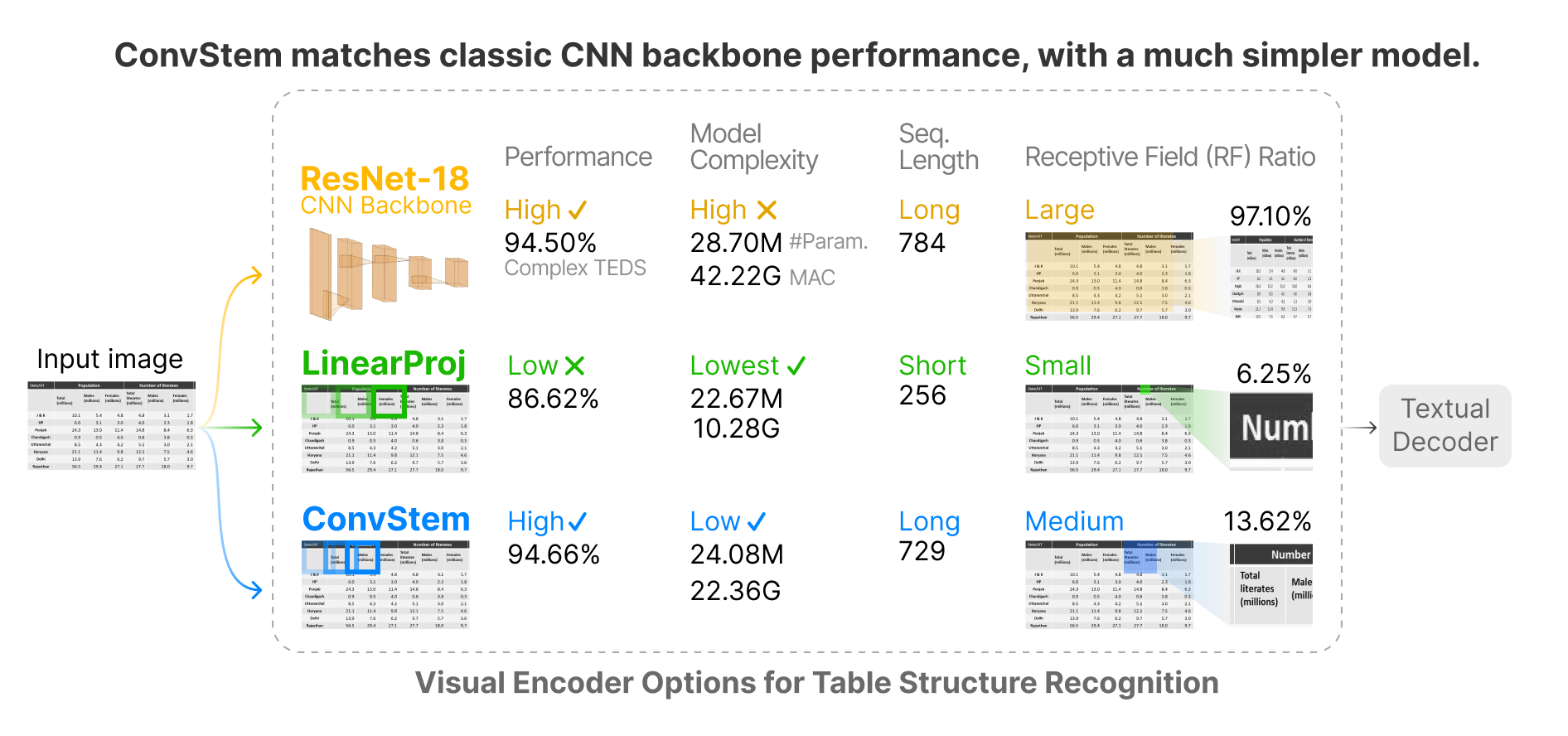High-Performance Transformers for Table Structure Recognition Need Early Convolutions
Abstract
Table structure recognition (TSR) aims to convert tabular images into a machine- readable format, where a visual encoder extracts image features and a textual decoder generates table-representing tokens. Existing approaches use classic con- volutional neural network (CNN) backbones for the visual encoder and transform- ers for the textual decoder. However, this hybrid CNN-Transformer architecture introduces a complex visual encoder that accounts for nearly half of the total model parameters, markedly reduces both training and inference speed, and hinders the potential for self-supervised learning in TSR. In this work, we design a lightweight visual encoder for TSR without sacrificing expressive power. We discover that a convolutional stem can match classic CNN backbone performance, with a much simpler model. The convolutional stem strikes an optimal balance between two crucial factors for high-performance TSR: a higher receptive field (RF) ratio and a longer sequence length. This allows it to “see” an appropriate portion of the table and “store” the complex table structure within sufficient context length for the sub- sequent transformer. We conducted reproducible ablation studies and open-sourced our code at https://github.com/poloclub/tsr-convstem to enhance transparency, in- spire innovations, and facilitate fair comparisons in our domain as tables are a promising modality for representation learning.

BibTeX
@article{peng2023high,
title={High-Performance Transformers for Table Structure Recognition Need Early Convolutions},
author={Peng, ShengYun and Lee, Seongmin and Wang, Xiaojing and Balasubramaniyan, Rajarajeswari and Chau, Duen Horng},
journal={arXiv preprint arXiv:2311.05565},
year={2023}
}




